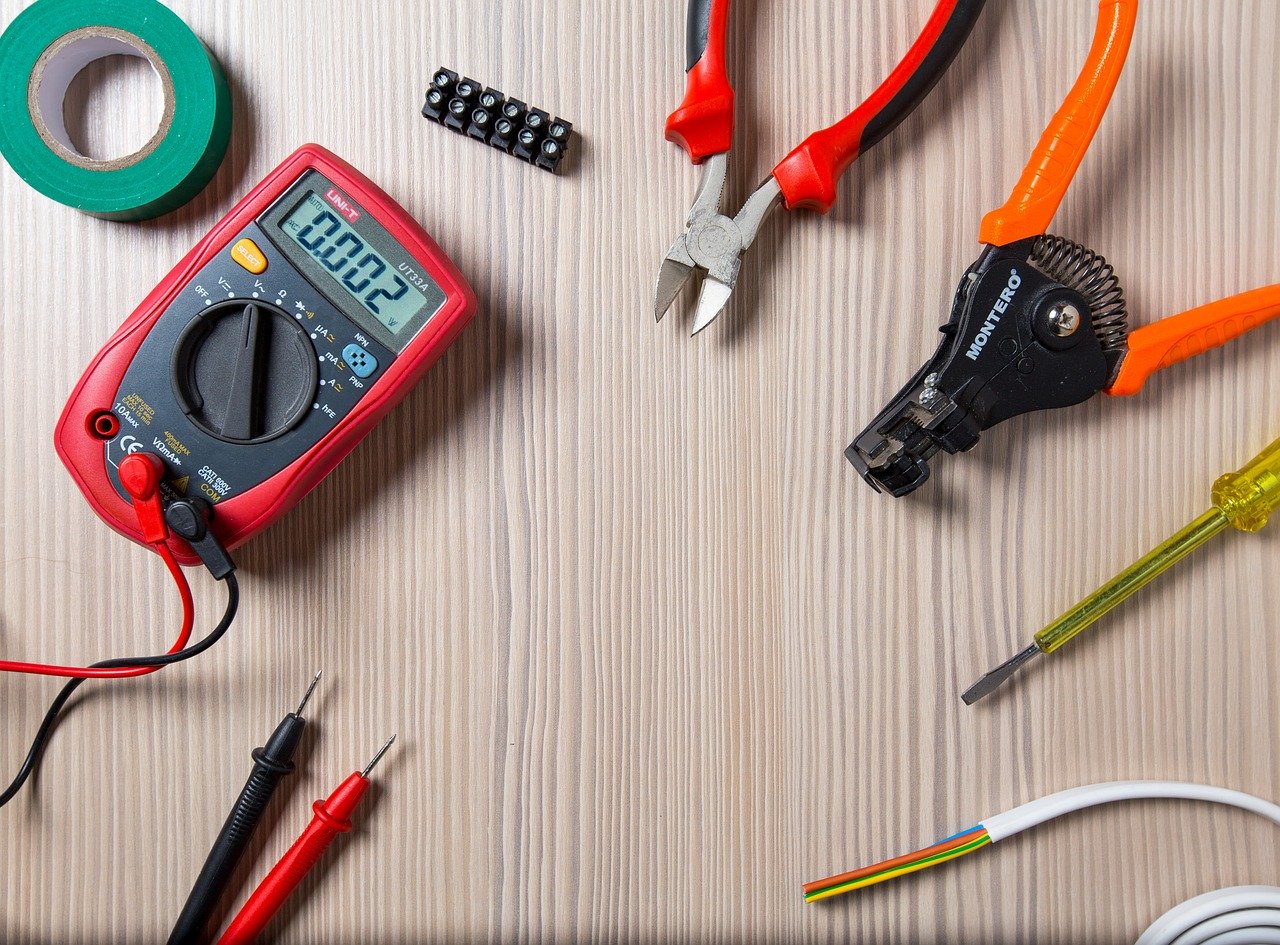Lifestyle
What to Do If Your Electrical Devices Make Noise

For the most part, electrical devices should operate quietly. You may notice a faint sound if you listen very closely, but it shouldn’t be obnoxious or disruptive.
If your power transformers are making a humming noise, it could be a sign that something is wrong. The same is true if your computer is making a lot more noise than usual, or if you hear a weird buzzing in your house. What should you do if your electrical devices are making noise?
Tracking Down the Source of the Noise
The first thing you should attempt to do is track down the source of the noise. Once you have a better idea of what’s making the noise, you can make a better plan of action for how to address it. You’ll also be able to articulate the problem much better to an electrician, should you need to call one.
- Test your appliances. First, consider testing some of your electrical appliances and devices. Closely monitor the noise and operations of things like computers, appliances, TVs, and other electrical devices. If you notice that one of these devices or appliances is making an excessive amount of noise, the problem may be isolated to it. Repairing or replacing the device in question could immediately solve the problem.
- Use a stethoscope. If you notice ambient background humming, you might be able to track down the source with a simple stethoscope or similar device. Run the stethoscope along the wall and listen closely; when does the noise get louder? You might hear noise in many areas of your house, or there might be one, obvious culprit. Either way, take note.
- Rely on process of elimination. The process of elimination is your best friend here. Access your circuit breaker and turn off all the circuits. Do you still hear the noise? If so, it’s incredibly likely that the source of the noise is not related to an electrical problem. You could have mechanical issues, you could have bees or other pests in your walls, or you might be dealing with a totally different type of issue.
- Consider the possibility of a non-electrical noise. Humming and buzzing isn’t always a result of an electricity problem. Remain open to the possibility of non-electrical noise.
The Most Common Causes of Electrical Noise
The most common causes of electrical noise include:
- Circuit breakers. Circuit breakers are designed to protect your electrical system from potential damage resulting from short circuits or electrical overload. Noise coming from your circuit breaker is probably a sign of malfunction, and should be addressed right away.
- Electric and gas meters. Digital electric and gas meters shouldn’t pose a problem, but older, analog meters may have moving parts that produce noise when not working properly. If this is the case, contact your utility provider to resolve the issue.
- Lights and fixtures. Lights and other fixtures are very common sources of electrical noise – especially fluorescent lights and dimmable lights. Replacing older bulbs with LEDs should immediately solve the problem in most cases.
- Electrical mains. Your electrical mains are home to an alternative current, and they’re bound to produce some light noise. But if this noise turns into a much louder, more metallic sound, it’s important to call an electrician and address the issue soon.
- Outlets and switches. Humming or buzzing coming from an outlet or switch is usually a sign of overloading; it could also be a sign of bad grounding. Calling a pro is the best course of action here.
- Transformers. By default, transformers produce a discernible hum or buzz as a sign of normal operations. Transformers process high volumes of electricity, so it’s only natural for them to produce some noise. However, if your transformer makes an excessive amount of noise, it could be a sign that an internal component has become damaged or that the device is not operating properly. As the transformer ages and suffers more wear and tear, the layers in the iron core can begin to separate and amplify vibrations. Problems with fans or windings within the transformer can also cause excessive noise.
Calling an Electrician
Electricity is profoundly dangerous, even for people who somewhat know what they’re doing. If you aren’t able to solve this problem quickly and easily, such as by changing a light bulb or replacing an old laptop, it’s a good idea to call an electrician. A professional will be able to help you diagnose the problem, brainstorm a solution, and execute the necessary work with minimal risk.
Humming and buzzing noises are always annoying, and if they’re loud or intermittent enough, they can seriously disrupt your quality of life. But with some proactive effort and a bit of detective work, you can track down the source of the noise and address it once and for all.
Lifestyle
How Magic Moment Resort Became the Pioneer of a New Era: The First-Ever Dazzler Select by Wyndham

In Central Florida’s packed landscape of family hotels and theme park lodgings, a unique kind of property has emerged. Magic Moment Resort & Kids Club in Orlando is earning attention from traveling families for a simple reason. It delivers joy, warmth, and convenience at a smart value that keeps Disney dreams accessible rather than overwhelming.
By joining Wyndham, Magic Moment Resort unlocks the strength of a global powerhouse, gaining worldwide visibility, advanced technology, and access to Wyndham Rewards, the largest hotel loyalty program on the planet. This strategic move expands its reach, builds guest trust, and amplifies its impact, all while preserving the unique identity that sets it apart.
Just a short drive from the gates of Walt Disney World, the resort sits along the palm-framed stretch of West Irlo Bronson Memorial Highway. The location has long been known for its tourism bustle, yet Magic Moment has carved out a softer identity. It feels playful and colorful, but also intentional. It is designed by a family for other families, and that perspective shapes every experience on the property.
A Philosophy Rooted in Family Connection
Magic Moment Resort was built with a belief often forgotten in today’s tourism industry. Family vacations should feel uplifting instead of stressful, and affordability should not come at the expense of comfort or creativity.
Check-in feels more personal than transactional. Parents arrive with strollers, snacks, and tired children. The staff seems to understand this rhythm instinctively. The energy is warm, the pace is easy, and the tone is set long before anyone even enters the room.
Unlike competing hotels that charge a steep premium for proximity to the parks, Magic Moment focuses on smart value without compromise. Its pricing strategy is refreshingly straightforward. Families can stay five minutes from Disney without draining their travel budgets. For many guests, that difference helps shift resources from hotel costs to experiences. It means more character breakfasts, more souvenirs, and more freedom to enjoy the parks without financial tension following every decision.
Spaces Designed for Children and Considerate of Parents
Magic Moment is filled with color, but nothing feels overstimulating. Instead, the resort offers a sense of wonder scaled to a child’s imagination.
The themed family rooms are a highlight. Children step into rooms that feel lighthearted and whimsical, yet parents appreciate that they are also functional and comfortable. It is the atmosphere of a themed suite without the theme park price.
Its Kids Club and Teens Club reflect that same thoughtful balance. These spaces invite exploration and creativity for children and provide a nurturing level of supervision. Parents can enjoy an hour by the heated pool, relax in a shaded cabana, or simply take a quiet moment while knowing their children are safe and engaged.
The resort’s grounds encourage slow mornings and gentle afternoons.There’s a 30,000 sqf outdoor playground as well as peaceful corners for parents. Importantly, families are not asked to pay additional fees to enjoy them. Magic Moment’s amenities feel generous rather than transactional.
Unforgettable Days at the Parks
For families navigating a Disney vacation, convenience is often the true luxury. Magic Moment delivers this with a complimentary delicious hot breakfast that encourages everyone to sit and enjoy the start of the day rather than rush through it.
Transportation to the parks is included, which removes one of the most common stress points for visiting families. There is no parking lot maze and no long lines at the toll booths. Guests simply board the shuttle and begin their day with ease.
When the sun sets and everyone returns from a day of rides and parades, the resort becomes a place to unwind. Children head straight for the pool. Parents sip Starbucks coffee. The atmosphere is relaxed and bright, and the resort feels like an extension of the Disney experience rather than a pause from it.
A Value That Resonates with Families
What truly elevates Magic Moment is the balance it achieves between smart value and experience. The resort has cultivated a loyal following because guests feel they receive more than they pay for. More thoughtful design. More space for connection. More comfort without excess.
Affordability here does not signal minimalism. Instead, it allows families to breathe. It creates space for shared moments that are often overlooked in the rush of theme-park vacations. Children play freely. Parents unwind without guilt. Families spend more time together and less time navigating logistics.
A Resort Built with Heart
Magic Moment Resort & Kids Club stands out in a region overflowing with hospitality options. Its charm is not rooted in extravagance. It is grounded in sincerity. It reflects the belief that family travel should feel joyful, accessible, and full of color.
For families planning a Disney visit, it represents more than a place to sleep. It is a retreat where memories can form in the quiet moments as much as in the thrilling ones.
At Magic Moment, the greatest luxury is not an amenity. It is the feeling of being exactly where you are meant to be, together.
-

 Tech5 years ago
Tech5 years agoEffuel Reviews (2021) – Effuel ECO OBD2 Saves Fuel, and Reduce Gas Cost? Effuel Customer Reviews
-

 Tech6 years ago
Tech6 years agoBosch Power Tools India Launches ‘Cordless Matlab Bosch’ Campaign to Demonstrate the Power of Cordless
-

 Lifestyle6 years ago
Lifestyle6 years agoCatholic Cases App brings Church’s Moral Teachings to Androids and iPhones
-

 Lifestyle5 years ago
Lifestyle5 years agoEast Side Hype x Billionaire Boys Club. Hottest New Streetwear Releases in Utah.
-

 Tech7 years ago
Tech7 years agoCloud Buyers & Investors to Profit in the Future
-

 Lifestyle5 years ago
Lifestyle5 years agoThe Midas of Cosmetic Dermatology: Dr. Simon Ourian
-

 Health7 years ago
Health7 years agoCBDistillery Review: Is it a scam?
-

 Entertainment6 years ago
Entertainment6 years agoAvengers Endgame now Available on 123Movies for Download & Streaming for Free
